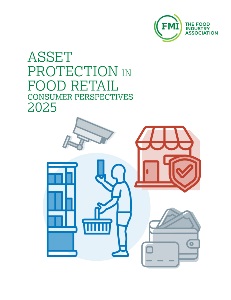Afternoon report: Corn edges lower on weak export demand, wheat mixed amid a weaker dollar and improving conditions
Good afternoon! USDA released their updated Agricultural Baseline production estimates just as I was finishing up the afternoon report. I’ll feature highlights from those estimates in tomorrow morning’s report, so stay tuned for that!
Feedback from the Field updates – last weeks of the season! How is harvest progressing on your farm this fall?! Click this link to take the survey and share updates about your farm’s harvest progress. I review and upload results daily to the FFTF Google MyMap, so farmers can see others’ responses from across the country – or even across the county!
My latest FFTF column is live on our site! Soybean harvest is rapidly coming to a close across the country and more and more FFTF respondents are reporting corn harvest as complete.
Responses are starting to slow as many growers are wrapping up for the year, so our time together in FFTF this growing season will also come to an end in the upcoming weeks. So be sure to drop any insights you’d like to share with us from the 2022 season at this link and I will share them on our map as well as in my columns as harvest season winds down. Thanks! -JH
Corn
Corn prices closed down just over a nickel today, with December 2022 futures ending at the $6.7575/bushel benchmark. Technical selling ensued today after the Dec22 contract dropped below the 50-day moving average to a two-and-a-half week low. Weak export data and a strong dollar limited demand prospects.
Cash bids were mixed at elevator locations in the Eastern Corn Belt today, though basis offerings at processors and ethanol plants firmed. Basis edged lower on the Mississippi River, where cash bids continue to trade at a steep discount to nearby futures prices.
Merchandisers across the Heartland attempted to lure more bushels out of storage with the stronger basis offerings as many farmers are unlikely to book any further sales until 2023 for both tax and pricing reasons. It’s likely a smart move – end users have more pricing power this fall as the export market continues to drag behind historical paces. Elevators have plentiful supplies right now, so farmers are more likely to gain financially by waiting until after the new year to book new cash sales.
Corn export volumes had a lackluster showing in today’s Export Inspections report from USDA. Volumes dipped 48% from the previous week to 9.1 million bushels through the week ending November 3. The trade had been anticipating a range between 11.8 million – 23.6 million bushels for the weekly estimate, so actual results were a bearish signal for corn prices during today’s trading session.
Soybeans
Soybean prices wavered early this morning but ultimately ended today’s trading session $0.08-$0.13/bushel lower. Despite some optimistic news in this morning’s export inspections report from USDA, the market was overshadowed by worries about Chinese demand as another round of COVID lockdowns ensues.
Speculation over the past few weeks about China potential easing its “zero-COVID” policy was met with resistance by Beijing today when the government affirmed it was not going to scale back the zero-COVID policy.
The news ushered in a round of profit-taking in today’s trading session after prices touched a six-week high. Markets are also bracing for higher soybean yields in Wednesday’s WASDE reports, which would be bearish for prices.
Cash soybean bids at an Ohio elevator firmed slightly today, though most offerings in the Eastern Corn Belt continue to be quoted at a discount to January 2023 futures prices. Soy crush facilities kept their bids largely unchanged yesterday and continue to be the sole opportunity for premium cash bids across the Heartland.
Soybean export inspections edged fractionally above last week’s paces in this morning’s Export Inspections report from USDA and topped all pre-report trade guesses to help limit some of the soy complex’s losses in today’s trading session.
Through the week ending November 3, federal officials inspected 95.2 million bushels of soybeans destined for export markets, up 0.2% on the week. The trade had been anticipating an estimate between 55.1 million – 91.9 million bushels.
The 95.2-million-bushel estimate came in above the anticipated trade range, which was an optimistic sign for export volumes that have lagged this season due to shipping constraints amid low water levels on the Mississippi River.
Shipping volumes in the U.S. Gulf continued to grow last week. USDA reported that 47.2 million bushels of soybeans were inspected for export at the Mississippi River, up from 40.5 million bushels last week.
China was the top destination for all soybeans inspected by export officials last week by a wide margin (67.6M bu.). Chinese soybean buyers are hungry for freshly harvested U.S. soybean supplies – the export inspection report showed that shipments of soybeans destined for China departed not just from the U.S. Gulf (30M bu.), as is typical this time of year, but sizeable cargoes are also being loaded out of the Pacific Northwest (32M bu.), Atlantic ports (4M bu.), and other interior terminals (1.5M bu.).
Wheat
Wheat prices were mixed in today’s trading session. Chicago SRW futures fell $0.01-$0.02/bushel while Kansas City HRW and Minneapolis spring wheat futures closed the day $0.04-$0.06/bushel higher.
The gains were derived from a weaker dollar. The weaker dollar raised optimism for export prospects, even though this week’s export inspections report didn’t bode favorably for wheat.
The losses were due largely to an expectation that rains across the Midwest and Plains over the weekend would likely help improve winter wheat crop conditions.
Cash offerings for soft red wheat weakened at an interior export terminal on Lake Erie at Toledo, Ohio. Basis for SRW in the Eastern Corn Belt continues to be quoted at a $0.30/bushel discount to the December 2022 Chicago SRW contract.
Basis bids for hard red winter wheat held steady today in the Southern Plains. New cash market activity was light even as Kansas City futures posted gains during today’s trading session. But as winter wheat crop conditions continue to deteriorate, farmers on the Plains are growing increasingly worried about crop shortfalls in 2023, which is leading many growers to hold 2022 crops longer.
Wheat export inspection volumes in this morning’s weekly Export Inspections report from USDA, surged 32% above last week’s volumes to 6.7 million bushels through the week ending November 3. But even with the weekly volume increase, the figure was still well below the pre-report trade range of 7.3 million – 16.5 million bushels.
Weather
I spent the weekend in Northern Illinois/Southern Wisconsin with family! It was very windy all weekend and rained heavily until yesterday. The unsavory weather conditions resulted in a lot of indoor time and Aunt Jack receiving a manicure from a 4-year-old – which is just as colorful as you are imagining. And it is, in my opinion, way more luxury than the hundred-dollar manicures that seem to be all the fashion these days.
We also had a tea party and watched Encanto, because that’s what all the cool grain analysts are doing these days if you’re looking for lifestyle tips to upgrade your marketing game!
There was a lot of corn still standing across the Badgerland and Northwestern Illinois in my weekend treks. The stalk quality looked less than ideal, though with a late season heat wave it also seemed like there were some plants that still may have had some green in the stalks. But even with my worries about stalks, corn yields were widely reported to be better than last year’s across the region, according to my coffee shop intel.
The market thinks that USDA is going to increase corn yields in Wednesday’s Crop Production and WASDE reports. And after hearing more of these favorable harvest reports over the weekend, I’m starting to lean that way myself.
Clear skies and cooler temperatures are forecast for most of the Heartland today following this weekend’s rain showers, according to NOAA’s short-term forecasts. The Northern Plains could see a chance of snow this evening, though any accumulation is likely to be light.
NOAA’s 6-10-day forecasts are now trending cool for the middle of the month across most of the country. Chances for rain will be below normal in the Midwest and Northern Plains, though the Central and Southern Plains are likely to see a near normal to above average change of precipitation during that tie.
Those trends will begin to shift slightly in the 8-10-day outlook. Forecasts during that time are still cool but not quite as chilly as in the 6-10-day forecast. The chances for rain will remain consistent with the 6-10-day forecast on the Central and Southern Plains, but chances for excessive dryness in the Upper Midwest and Plains will recede slightly.
At any rate, that should help close the door on Fall 2022 harvest activity in the Upper Midwest. Some of the showers could benefit Mississippi River levels also, which is good news for grain and fertilizer flows.
Inputs
China has famously banned urea and phosphate exports over the past couple years as the world grapples through COVID-19-releated production slowdowns and supply imbalances. But early this morning, the Philippines announced it would be buying 150,000 metric tonnes (MT) of unspecified fertilizers from China.
The deal has not yet been finalized – and at press time I hadn’t heard any comments on the deal by the Chinese government. The Philippine Trade and Investment Center said in a statement it would purchase the Chinese fertilizers at a $470/tonne price point.
The Philippines also plans on reaching out to Russia, Indonesia, the United Arab Emirates, and Malaysia to source the fertilizer supplies it will need for the upcoming growing season. But if the deal with China goes through it will be significant because it will be the first time China will have shown a willingness to export fertilizer products in the past couple years.
More Inputs
Another European fertilizer producer announced overnight that production volumes would ramp back up following reductions due to the E.U.’s natural gas issues with Russia.
Lithuania’s AB Lifosa, a phosphate fertilizer producer, will “resume limited production,” according to a statement released from Lifosa’s parent company, EuroChem. The company plans to restart production in December, albeit at a lesser volume and dependent upon raw material availability. Lifosa’s annual production capacity typically tops 1 million metric tonnes.
Lifosa’s manufacturing operations shut down in September after Russia cut off natural gas supplies to the European Union. The lack of raw materials and soaring energy costs rendered operations unfeasible at the time.
What else I’m reading this morning on our website, FarmFutures.com:
Corn, wheat, and money are still playing ball. Bryce Knorr lists three fundamentals to watch to make sure you aren’t missing out on the game.
Water Street Solutions’ Darren Frye offers three approaches to solve your farm’s toughest problems.
Naomi Blohm knows that the best marketing plans have started scenario planning not just for 2022 grain, but also the 2023 and 2024 crops.
Mexico is moving closer to a GMO corn ban – here’s how it could impact U.S. corn farmers.
For those of you who may have missed my Wednesday morning newsletter, my latest E-corn-omics column is about the implications of the recent Brazilian election to U.S. farmers.
AgMarket.Net’s Matt Bennett pencils out 2023 fertilizer break evens and encourages farmers to lock in sales to cover the higher input costs.
Our latest special edition Farm Futures print issue features a series on farmer mental health. It is one of the pieces I am most proud of during my time here, so I cannot recommend checking it out enough!
Closing Ag Commodity Prices – 11/7/2022
Contract
Units
High
Low
Last
Net Change
% Change
DEC ’22 CORN
$ / BSH
6.8075
6.7525
6.755
-0.055
-0.81%
MAR ’23 CORN
$ / BSH
6.8675
6.81
6.8125
-0.055
-0.80%
MAY ’23 CORN
$ / BSH
6.8675
6.815
6.815
-0.0525
-0.76%
JUL ’23 CORN
$ / BSH
6.815
6.7675
6.7675
-0.0525
-0.77%
SEP ’23 CORN
$ / BSH
6.3975
6.355
6.365
-0.03
-0.47%
DEC ’23 CORN
$ / BSH
6.2625
6.215
6.2325
-0.0225
-0.36%
AR2 ’24 CORN
$ / BSH
6.325
6.29
6.3025
-0.0225
-0.36%
AY2 ’24 CORN
$ / BSH
6.345
6.345
6.325
-0.02
0.00%
JUL ’24 CORN
$ / BSH
6.32
6.305
6.2975
-0.0175
0.08%
NOV ’22 SOYBEANS
$ / BSH
14.575
14.39
14.4
-0.115
-0.86%
JAN ’23 SOYBEANS
$ / BSH
14.69
14.47
14.4975
-0.125
-0.85%
MAR ’23 SOYBEANS
$ / BSH
14.7575
14.5475
14.575
-0.115
-0.78%
MAY ’23 SOYBEANS
$ / BSH
14.825
14.62
14.6475
-0.1125
-0.76%
JUL ’23 SOYBEANS
$ / BSH
14.8475
14.6475
14.67
-0.1125
-0.76%
AUG ’23 SOYBEANS
$ / BSH
14.65
14.47
14.4975
-0.0975
-0.67%
SEP ’23 SOYBEANS
$ / BSH
14.24
14.0775
14.1125
-0.0825
-0.56%
NOV ’23 SOYBEANS
$ / BSH
14.0175
13.8725
13.905
-0.0925
-0.66%
AN2 ’24 SOYBEANS
$ / BSH
14.0275
13.915
13.9375
-0.0825
-0.73%
AR2 ’24 SOYBEANS
$ / BSH
13.95
13.83
13.8525
-0.08
-0.65%
AY2 ’24 SOYBEANS
$ / BSH
13.8075
13.78
13.805
-0.0825
-0.67%
DEC ’22 SOYBEAN OIL
$ / LB
77.8
75.98
76.35
-0.82
-1.06%
JAN ’23 SOYBEAN OIL
$ / LB
75.35
73.58
73.93
-0.92
-1.23%
DEC ’22 SOY MEAL
$ / TON
423.3
414.6
418.9
-1.5
-0.36%
JAN ’23 SOY MEAL
$ / TON
416.5
408.8
413
0.2
0.05%
MAR ’23 SOY MEAL
$ / TON
407.6
400.8
404.2
0.7
0.17%
MAY ’23 SOY MEAL
$ / TON
403
396.8
399.9
1.1
0.28%
JUL ’23 SOY MEAL
$ / TON
401.9
395.7
398.5
0.8
0.20%
DEC ’22 Chicago SRW
$ / BSH
8.6375
8.34
8.475
-0.0025
-0.03%
MAR ’23 Chicago SRW
$ / BSH
8.8075
8.5325
8.6525
-0.015
-0.17%
MAY ’23 Chicago SRW
$ / BSH
8.9025
8.64
8.7575
-0.015
-0.17%
JUL ’23 Chicago SRW
$ / BSH
8.9325
8.6925
8.8025
-0.0025
-0.03%
SEP ’23 Chicago SRW
$ / BSH
8.985
8.7975
8.87
0.005
0.06%
DEC ’23 Chicago SRW
$ / BSH
9.05
8.8425
8.9475
0.01
0.11%
AR2 ’24 Chicago SRW
$ / BSH
9.05
8.92
8.9475
-0.0025
-0.06%
DEC ’22 Kansas City HRW
$ / BSH
9.7175
9.4025
9.5925
0.06
0.63%
MAR ’23 Kansas City HRW
$ / BSH
9.68
9.3825
9.5575
0.05
0.53%
MAY ’23 Kansas City HRW
$ / BSH
9.6425
9.3875
9.52
0.045
0.47%
JUL ’23 Kansas City HRW
$ / BSH
9.555
9.295
9.455
0.0575
0.61%
SEP ’23 Kansas City HRW
$ / BSH
9.5225
9.3175
9.4375
0.0625
0.67%
DEC ’23 Kansas City HRW
$ / BSH
9.54
9.35
9.465
0.06
0.64%
AR2 ’24 Kansas City HRW
$ / BSH
0
#N/A
9.345
0
0.00%
DEC ’22 MLPS Spring Wheat
$ / BSH
9.7325
9.44
9.5925
0.0475
0.50%
MAR ’23 MLPS Spring Wheat
$ / BSH
9.845
9.56
9.7225
0.0575
0.59%
MAY ’23 MLPS Spring Wheat
$ / BSH
9.9
9.67
9.7925
0.0625
0.64%
JUL ’23 MLPS Spring Wheat
$ / BSH
9.885
9.735
9.785
0.0725
0.75%
SEP ’23 MLPS Spring Wheat
$ / BSH
9.635
9.49
9.525
0.03
0.32%
DEC ’23 MLPS Spring Wheat
$ / BSH
9.55
9.55
9.55
0.0475
0.50%
AR2 ’24 MLPS Spring Wheat
$ / BSH
0
#N/A
9.5075
0
0.00%
DEC ’21 ICE Dollar Index
$
111.17
109.92
109.955
-0.819
-0.74%
DE ’21 Light Crude
$ / BBL
93.74
90.4
91.94
-0.67
-0.72%
JA ’21 Light Crude
$ / BBL
92.53
89.31
90.87
-0.58
-0.63%
DEC ’22 ULS Diesel
$ /U GAL
3.9001
3.7774
3.7902
-0.1246
-3.18%
JAN ’23 ULS Diesel
$ /U GAL
3.6941
3.6095
3.6219
-0.0752
-2.03%
DEC ’22 Gasoline
$ /U GAL
2.7401
2.6472
2.6631
-0.0717
-2.62%
JAN ’23 Gasoline
$ /U GAL
2.655
2.588
2.6003
-0.0486
-1.83%
NOV ’22 Feeder Cattle
$ / CWT
178.45
177.525
178.2
0.375
0.21%
JAN ’23 Feeder Cattle
$ / CWT
180.175
178.825
179.75
0.125
0.07%
DE ’21 Live Cattle
$ / CWT
153.25
151.35
153.025
1.375
0.91%
FE ’21 Live Cattle
$ / CWT
155.2
154.175
155.025
0.65
0.42%
DEC ’22 Live Hogs
$ / CWT
87.575
82.9
86.9
3.925
4.73%
FEB ’23 Live Hogs
$ / CWT
89.675
86.425
89.05
2.625
3.04%
NOV ’22 Class III Milk
$ / CWT
20.95
20.83
20.9
0.02
0.10%
DEC ’22 Class III Milk
$ / CWT
20.65
20.32
20.5
0.15
0.74%
JAN ’23 Class III Milk
$ / CWT
20.04
19.63
19.66
-0.09
-0.46%
Get our top content delivered right to your inbox. Subscribe to our morning and afternoon newsletters!





